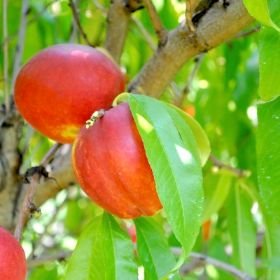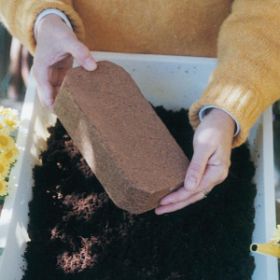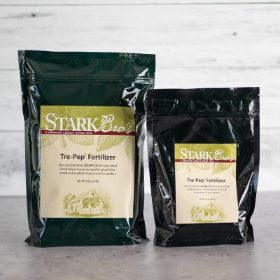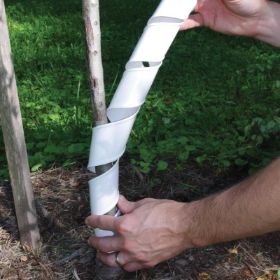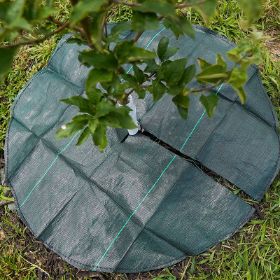Description
About the Arctic Queen Nectarine
The Arctic Queen White Nectarine Tree, a creation from Zaiger Genetics, stands out as an invaluable addition to any garden or orchard. This variety showcases vigorous, upright growth, ensuring the development of a robust and healthy tree. Its self-pollinating nature makes it an excellent choice for smaller gardens or orchards, consistently producing an abundance of delectable nectarines each season.
Characterized by an attractive red skin and relatively uniform ripening, the Arctic Queen guarantees a reliable supply of fruit throughout the harvest season, establishing its reputation as a steadfast choice for fruit enthusiasts and growers alike.
About the Fruit
The white nectarines from the Arctic Queen captivate with their exquisite taste and adaptability in various culinary pursuits. Bite into the succulent, white-fleshed fruit to experience its exceptional flavor, striking a perfect balance between sweetness and mild, sub-acidic notes. This fruit’s firm texture lends itself well to diverse uses, from being enjoyed fresh to being preserved, baked, or incorporated into a range of recipes.
Notably, the Arctic Queen nectarine seamlessly substitutes in peach recipes, eliminating the need to peel the fruit, simplifying culinary endeavors. Beyond its exceptional taste, the fruit’s firmness contributes to excellent handling, shipping quality, and extended shelf life, reflecting the meticulous breeding and development by Zaiger Genetics.
How to Grow the Arctic Queen White Nectarine
The Arctic Queen White Nectarine Tree thrives best in warm, temperate climates, ideally suited for USDA Zones 6-9, where ample sunlight is available. Ensure well-draining soil enriched with organic matter when planting in a sunny location, allowing adequate spacing for the tree’s growth. Consistent moisture, avoiding waterlogging, remains crucial for optimal growth. Regular pruning in late winter fosters healthy fruit production, while monitoring and addressing pests and diseases promptly ensures the tree’s sustained health and prolific fruit yield.
Survival Guaranteed!
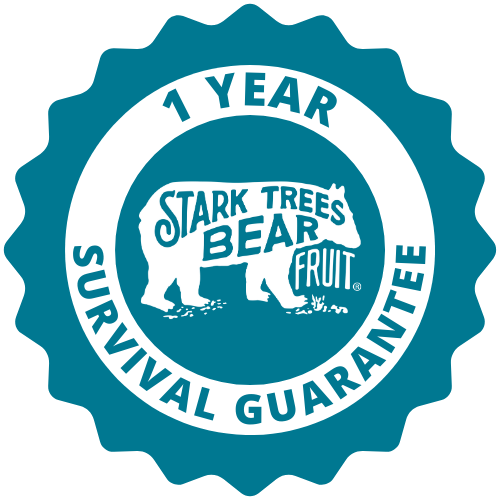

Since 1816, Stark Bro’s has promised to provide customers with the very best fruit trees and plants. It’s just that simple. If your trees or plants do not survive, please let us know within one year of delivery. We will send you a free one-time replacement, with a nominal shipping fee of $9.99. If the item in question is not available, we can issue a one-time credit to your account equaling the original product purchase price or issue you a refund. Read more about our warranty policy.
Characteristics
| Bloom Color | Pink |
| Bloom Time | Mid |
| Fruit Color | Red |
| Fruit Size | Large |
| Hardiness Zone Range | 6 - 9 |
| Pollination | Self-Pollinating |
| Ripens/Harvest | Late July/early August |
| Shade/Sun | Full Sun |
| Soil Composition | Loamy |
| Soil Moisture | Well Drained |
| Soil pH Level | 6.0 - 7.0 |
| Taste | Sweet |
| Texture | Firm, Crisp |
| Years to Bear | 2 - 4 |
Size & Spacing
Mature Size
Recommended Spacing
Zone Compatibility
Pollination
This variety is self pollinating.
Tools & Supplies
Planting & Care
Learn all about how to grow nectarine trees in The Growing Guide. An entire section of our website dedicated to your growing success.







